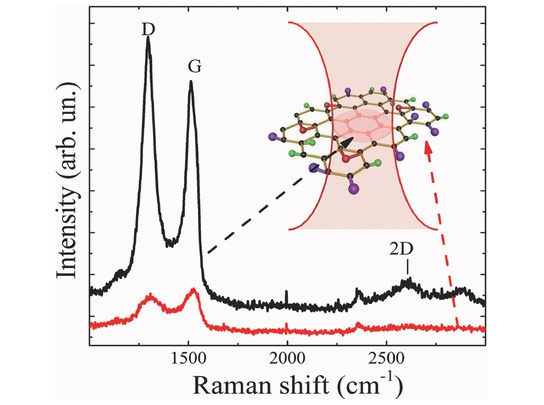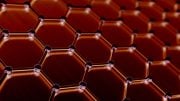
High-quality continuous (GO) thin films are prepared by a self-assembly method. Z-scan measurements during the laser-induced reduction process unveil in situ nonlinear responses in the GO film. Third-order nonlinear responses of the GO film can be tuned dynamically by varying the laser input fluence. GO thin films with tunable nonlinear responses and versatile patterning opportunities by using direct laser writing may serve as promising solid-state materials for novel nonlinear functional devices. Credit: Xiaorui Zheng, et al., Advanced Materials, DOI: 10.1002/adma.201304681
A new study details how scientists at the Swinburne Institute of Technology developed a micrometer thin film with record-breaking optical nonlinearity.
Swinburne researchers have developed a high-quality continuous graphene oxide thin film that shows potential for ultrafast telecommunications.
Associate Professor Baohua Jia led a team of researchers from Swinburne’s Center for Micro-Photonics to create a micrometer thin film with record-breaking optical nonlinearity suitable for high-performance integrated photonic devices used in all-optical communications, biomedicine, and photonic computing.
“Such a laser patternable highly nonlinear thin film, about one hundredth of a human hair, has not been achieved by any other material,” Professor Jia said.
Graphene is derived from carbon, the fourth most abundant element on earth. It has many useful properties, including light transparency and electrical conductivity, and can be completely recycled.
To create the thin film the researchers spin-coated graphene oxide solution to a glass surface.
Using a laser as a pen they created microstructures on the graphene oxide film to tune the nonlinearity of the material.
“We have developed a new platform in which we can fabricate each optical component with desired nonlinearity,” PhD student Xiaorui Zheng said.
“Currently with telecommunications or all optical communications you have to fabricate each component individually and try to integrate them together.
“Now we can provide a film, on which everything can be fabricated with laser and then it is automatically integratable.”
Current manufacturing methods in semiconductor labs require expensive cleanrooms to fabricate photonic chips. The fabrication and laser writing of this photonic material is simple and low cost.
“Using this new method, we have demonstrated the possibility of manufacturing a scalable and cheap material,” Professor Jia said.
The researchers are now working to fabricate a functional device.
The Swinburne co-authors included Mr Xiaorui Zheng, Dr Xi Chen, and Professor Min Gu. This project is funded by the Australian Research Council’s Discovery Early Career Researcher Award scheme.
Reference: “In Situ Third-Order Non-linear Responses During Laser Reduction of Graphene Oxide Thin Films Towards On-Chip Non-linear Photonic Devices” by Xiaorui Zheng, Baohua Jia, Xi Chen and Min Gu, 17 March 2014, Advanced Materials.
DOI: 10.1002/adma.201304681









Be the first to comment on "Graphene Photonics Breakthrough Has Potential for Ultrafast Telecommunications"